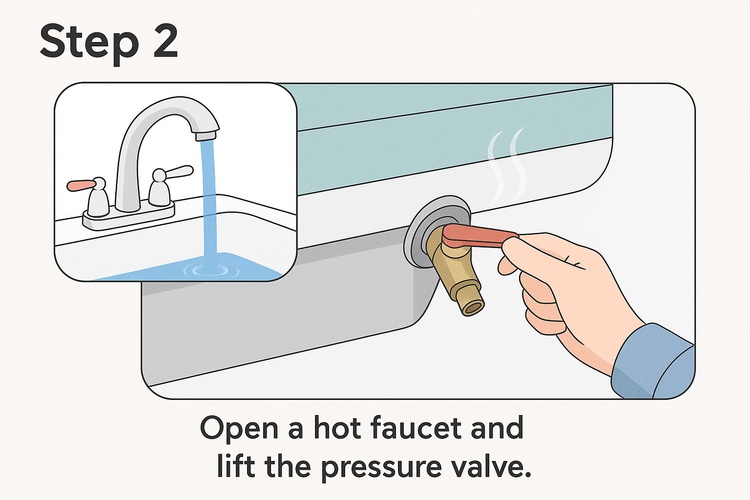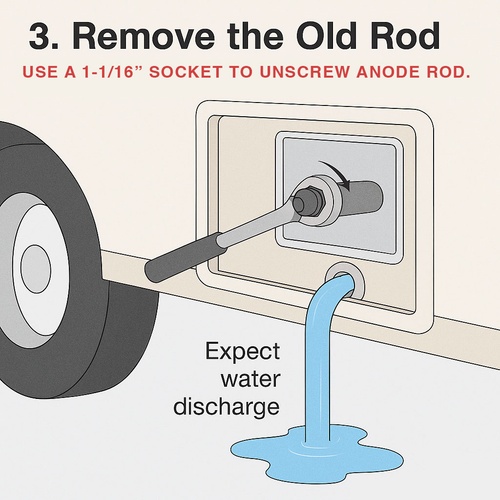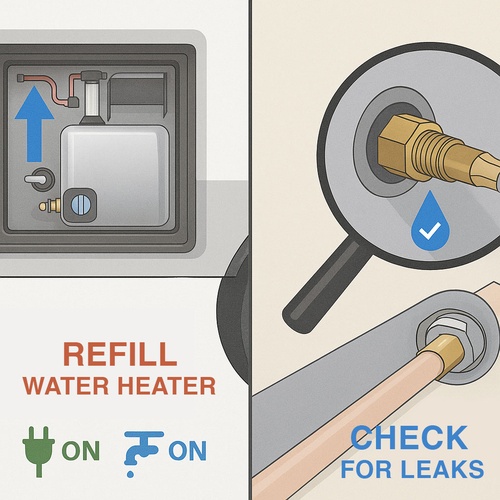Why Your RV Smells Like Rotten Eggs (And How to Fix It for Good)
Posted by Happy Campers Store on Oct 20th 2025
Why Your RV Smells Like Rotten Eggs (And It’s Not Always the Black Tank)
Published October 2025 • RV Problem Solver Series
Few things kill the RV vibe faster than that unmistakable rotten-egg smell creeping through your rig. Most owners assume the black tank is to blame — but that sulfur-like odor can actually come from several different systems. The key is knowing where to look.
Quick answer: If your RV smells like rotten eggs, it’s usually caused by hydrogen sulfide gas from bacteria in your holding tanks, decaying food in the gray tank, or a corroded anode rod in your water heater. Each source requires a different fix — black tanks need deep rinsing, gray tanks need thorough cleaning, and water heaters often need anode replacement.
Common Sources of Rotten-Egg Odor in an RV
That sharp sulfur smell is caused by hydrogen sulfide gas (H₂S). It forms when bacteria break down organic matter without oxygen or when minerals like magnesium react with a water heater’s anode rod. Here are the three main culprits:
- Black Tank: Anaerobic waste breakdown releasing sulfur gas through vents.
- Gray Tank: Trapped food debris or soap scum creating bacterial growth in warm water lines. See KOA’s maintenance guide for gray-tank hygiene basics.
- Water Heater: A corroded anode rod reacting with minerals in hot water (Lippert Maintenance).

Step-by-Step Diagnosis
- Smell test at each drain: Sniff near the shower and kitchen drains. If odor increases there, the gray tank or P-trap has gone dry.
- Flush the black tank thoroughly: Use your built-in rinser or wand and refill with a mineral-based odor control like Happy Campers Treatment.
- Run hot water for 3–5 minutes: If the smell intensifies only with hot water, the anode rod is likely reacting with minerals — it’s time to inspect or replace it.
- Check the roof vent pipe: Clogged vents can push gases back into living space instead of releasing outside.
Quick Fixes and Long-Term Prevention
- Clean and treat holding tanks monthly.
- Keep P-traps wet by running water weekly when stored.
- Drain and flush the water heater every season; replace the anode rod annually if corroded.
- Use mineral-based odor control — not enzyme perfumes — to neutralize sulfur gas safely.
Hydrogen sulfide gas (H₂S) forms in oxygen-poor environments. In your tanks, that means trapped waste or gray water biofilms. Mineral salts in Happy Campers react with and neutralize H₂S, stopping odor at the source instead of masking it.
Best Replacement Parts & Upgrades
When odor points to your water heater, replacing the anode rod is inexpensive insurance. Below are trusted options that fit most RV water heaters:
| Part | Description | Buy |
|---|---|---|
| Suburban 232767 Magnesium Anode Rod | Standard ¾" NPT thread; fits most Suburban water heaters; strong corrosion protection. | View on Amazon |
| Camco 11553 Aluminum Anode Rod | Good for areas with hard water; resists rapid corrosion; fits Atwood-style heaters. | View on Amazon |
| Suburban 232767 Kit w/ Wrench | Includes socket tool for easy removal and Teflon tape; ideal for yearly maintenance. | View on Amazon |
Prices and availability are accurate at the time of writing but may vary by region and season.
How to Replace an RV Water Heater Anode Rod (Step-by-Step)
Most Suburban and Atwood-style RV water heaters use a sacrificial anode rod to prevent tank corrosion. Over time, that rod breaks down — and when it reacts with minerals, it can cause the rotten-egg smell you notice from your hot water lines.
1. Turn off power and water: Shut off electricity or propane to the water heater and close the water supply.

2. Relieve pressure: Open a hot water faucet and pull the heater’s pressure relief valve to release internal pressure.

3. Remove the old anode rod: Use a 1-1/16" socket wrench to unscrew the rod counterclockwise. Be prepared for water to drain out.

4. Inspect the rod: If it’s more than 75% corroded or coated with calcium, replace it. A badly deteriorated rod can no longer protect the tank.

5. Wrap the new rod threads: Apply Teflon tape to the new anode rod threads for a watertight seal.

6. Install and refill: Tighten the new rod, close the pressure valve, and refill the tank. Check for leaks.

7. Flush annually: Once per year, drain the tank completely and flush with clean water to remove sediment buildup.

⚙️ Recommended maintenance interval: Replace your anode rod every 12 months or when it’s more than 75% worn — whichever comes first.
When to Seek Professional Help
If the odor persists after tank and heater cleaning, you may have:
- A cracked vent line or roof seal leak
- Contaminated fresh water source
- Severe gray-tank biofilm requiring professional flush
Related Posts
- Best Way to Clean and Maintain Holding Tanks
- RV Holding Tank Reset: The Science of Starting Fresh
- RV Smells Like Sewage? How to Fix Quickly
RV Rotten Egg Smell FAQs
Why does my RV smell like rotten eggs when I use hot water?
The most common cause is a corroded magnesium anode rod in the water heater reacting with minerals, creating hydrogen sulfide gas. Replacing the rod or flushing the tank eliminates the odor.
Can gray tanks cause a sulfur smell too?
Yes. Food particles, grease, and soap scum in gray tanks can grow bacteria that release sulfur gases, especially in warm weather or if P-traps dry out.
Is it safe to add bleach to get rid of the smell?
Using bleach inside RV holding tanks can damage seals and kill beneficial bacteria in treatment systems. A mineral-based odor neutralizer like Happy Campers is safer and longer-lasting.
About the Author: Happy Campers has specialized in RV sanitation science for over 20 years, producing mineral-based tank treatments trusted by full-time RVers and service technicians across North America.


